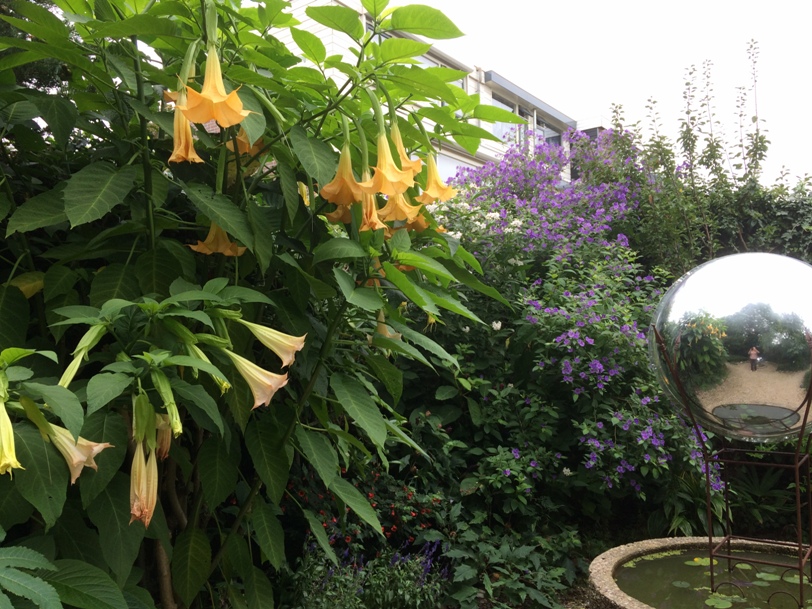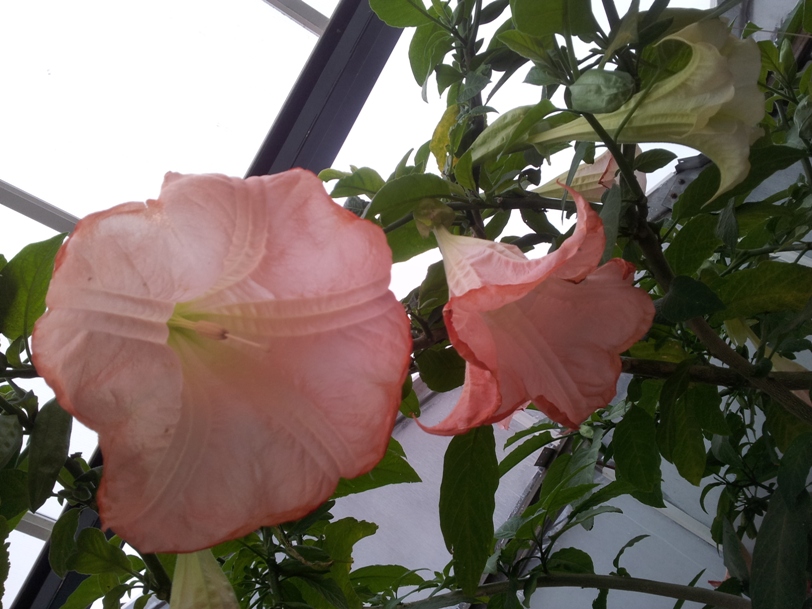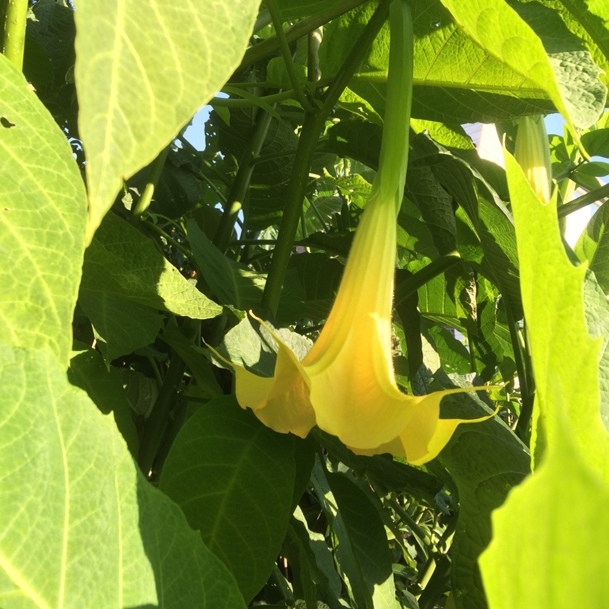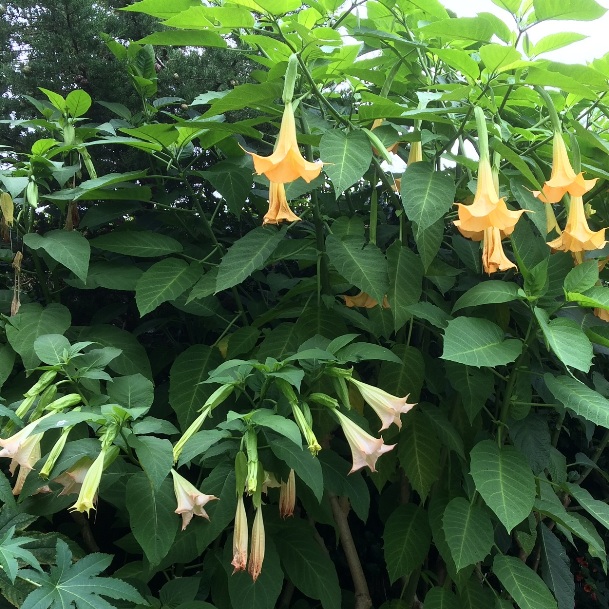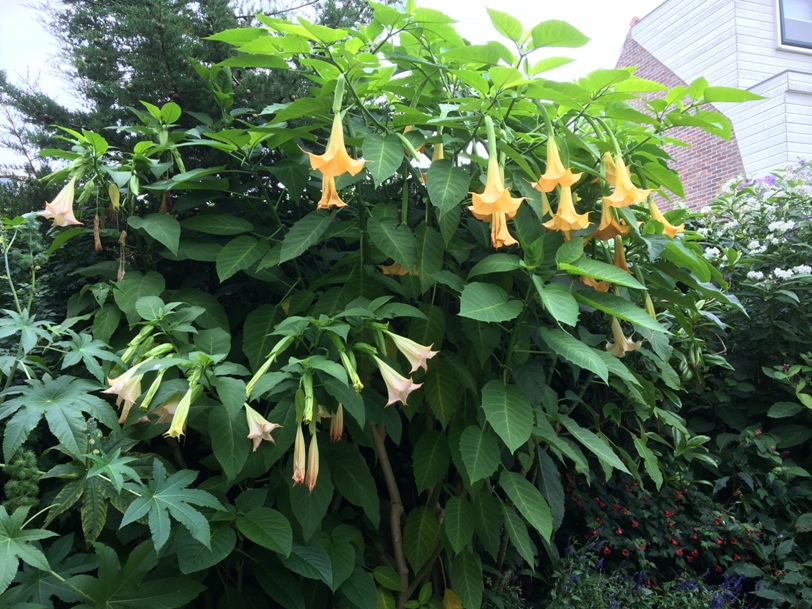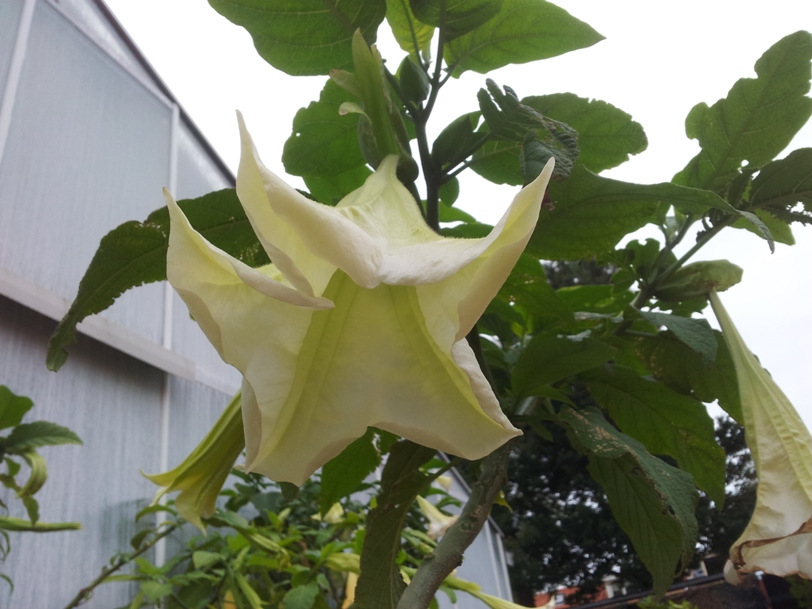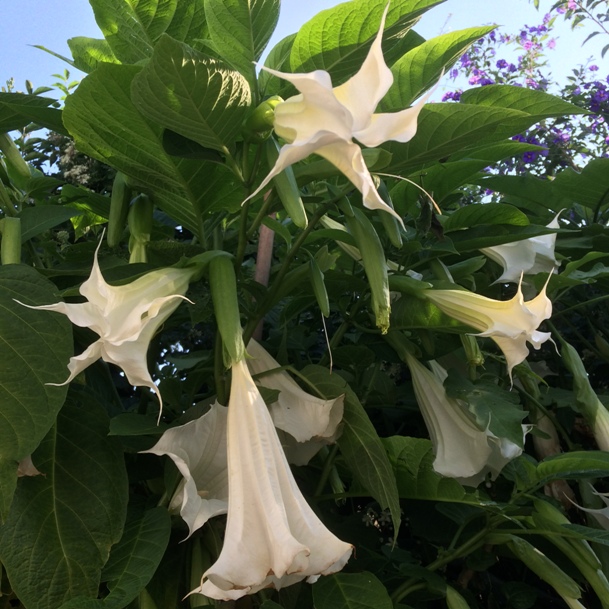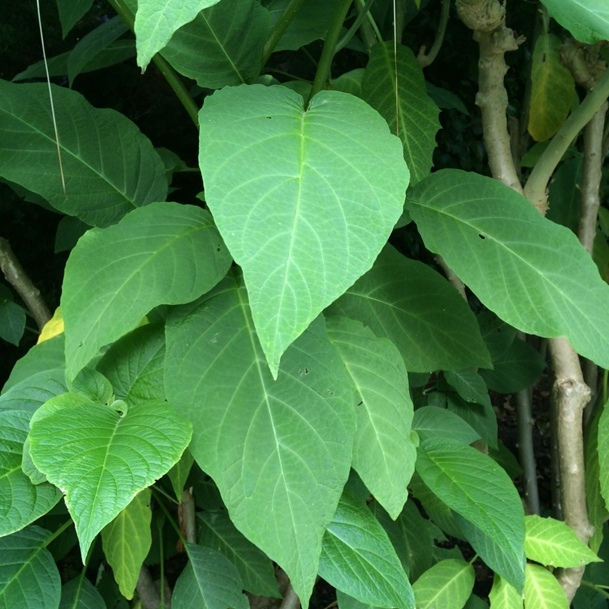Angel's-trumpet
Brugmansia sp.
Potato family (Solanaceae)
Fatally seductive
All parts of the angel trumpet are poisonous. For centuries this genus has been cultivated by the native American people for many uses including as an aphrodisiac and for religious rituals. The alkaloids, which in low doses have a psychoactive effect, are lethal at high dose. The vernacular name refers to this deadly effect.
Brugmansia is named after Sebald Justinus Brugmans (1763-1819) who was born in Franeker and later became professor at Leiden University. Since the 18th century the angel trumpet has been spread worldwide because of its beautifully fragrant, exotic flowers.
In the 18th century every self-respecting lord of the manor had a specimen in his greenhouse. Examples include the white flowered Brugmansia suaveolens, whose species name translates as 'pleasant smelling', and the red-orange flowered B. sanguinea, which continues flowering if overwintered at temperatures above 15oC.
Themes
Crown jewel in the Overzee Botanic Garden.
Fragrant flowers.
Used to help manage rheumatoid arthritis.
All parts of the plant are toxic.
Many South American cultures use Brugmansia suaveolens in rituals.
Details
| Description: | Shrub, up to 5 m tall. |
|---|---|
| Distributions: | East brazil |
| Year cycle: | Perennial (trees and shrubs included) |
| Hardiness: | 34 - 41 f (tender - cool or frost-free glasshouse) |
| Flowering period: | Juni - september |
| Flower color: | White, yellow, pink |
| Notes on flowers: | Flowers white, yellow or pink. |
| At its best: | Juni - september |
